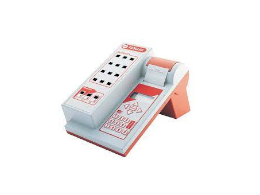Plus d'infos
Spectrophotométrie
La spectrophotométrie mesure l'interaction des échantillons avec la lumière, qu'elle soit visible, infrarouge ou ultraviolette. Un spectrophotomètre mesure les longueurs d'onde de la lumière absorbée, transmise et réfléchie par les matériaux, permettant ainsi de caractériser leurs propriétés physiques, leur composition et leurs couleurs.
Autres informations sur le laboratoire :
A quoi sert la spectrophotométrie ?
La spectrophotométrie constitue une méthode quantitative de détermination de la concentration de molécules dans une solution, où l'absorbance lumineuse est directement liée à la composition de la substance. Elle permet également de suivre la progression des réactions enzymatiques en fonction des variations d'absorbance. Ces tests enzymatiques sont courants dans analyse des aliments, où la spectrophotométrie est utilisée pour déterminer les concentrations de lactose et l'acide phytique.
La spectrophotométrie peut également être utilisée à des fins de contrôle qualité afin de garantir que la couleur visible d'un produit reste dans une plage appropriée, même après un certain temps ou une exposition à des influences externes. Elle est utile pour déterminer le jaunissement et résistance à la lumière du papier et du carton.
Comment fonctionne un spectrophotomètre ?
À l'intérieur du spectrophotomètre, une source lumineuse et un monochromateur produisent un faisceau lumineux de longueur d'onde contrôlée. Ce faisceau traverse l'échantillon, généralement une solution contenue dans une cuvette transparente. L'échantillon absorbe des longueurs d'onde lumineuses spécifiques, selon ses propriétés chimiques et physiques, et transmet ou réfléchit le reste du spectre. La lumière restante est captée par un photodétecteur et enregistrée.
Les données recueillies avec le spectrophotomètre permettent ensuite de tracer un graphique indiquant les longueurs d'onde absorbées et leur intensité, ce qui fournit des informations sur les concentrations de substances chimiques présentes, ainsi que des données quantitatives sur leurs couleurs. Des informations sur certains aspects chimiques, tels que les niveaux de conjugaison et de conformation, peuvent également être obtenues.
Spectrophotométrie UV-Vis
La forme la plus courante de spectrophotométrie est spécifique aux rayons ultraviolets et visibles du spectre électromagnétique et est communément appelée spectrophotométrie UV-Vis. Les échantillons colorés absorbent intrinsèquement des parties de la lumière visible et UV, ce qui rend cette analyse applicable à un large éventail d'espèces chimiques. Certains échantillons blancs absorbent également la lumière UV, notamment les composés organiques conjugués.
Échantillons appropriés et préparation des échantillons
La spectrophotométrie se concentre traditionnellement sur les solutions d'analyse, qui doivent être placées dans des cuvettes adaptées. Le type de cuvette dépend de la longueur d'onde de la lumière utilisée (par exemple, en quartz pour l'ultraviolet, en verre pour le visible). Les échantillons solides peuvent également être analysés à l'aide de spectrophotomètres spéciaux, comme un spectrophotomètre couleur. Dans ce cas, l'échantillon doit généralement présenter une surface relativement plane pour permettre la réflexion de la lumière.
Avantages et limites de la spectrophotométrie
La spectrophotométrie est une technique simple qui fournit des résultats précis et constants sur une grande variété d'échantillons. Une fois les échantillons préparés, ils peuvent être testés relativement rapidement et l'analyse est généralement non destructive.
Les limites de la spectrophotométrie incluent une sensibilité et une sélectivité relativement faibles. Il peut donc être difficile de détecter de très faibles concentrations d'un analyte ou de le distinguer d'autres substances absorbant la lumière à la même longueur d'onde.
Spectrométrie vs spectrophotométrie
La spectrométrie est un terme couramment utilisé pour décrire diverses techniques d'analyse. Plus précisément, elle désigne toute méthode d'analyse recueillant un spectre de données. Cela signifie que, si elle peut être utilisée pour décrire la spectrophotométrie, elle est également utilisée pour décrire des techniques distinctes, comme la spectrométrie de masse. spectrométrie de masse à haute résolution et spectrométrie de résonance magnétique nucléaire.
La spectrophotométrie, quant à elle, fait spécifiquement référence aux techniques dans lesquelles un échantillon est exposé à différentes longueurs d'onde de rayonnement électromagnétique, le plus souvent dans les parties visibles et adjacentes du spectre.
Besoin d'une analyse ?
Measurlabs propose des produits de haute qualité services de tests en laboratoire avec la spectrophotométrie et des dizaines d'autres techniques d'analyse. Veuillez nous contacter via le formulaire ci-dessous ou à l'adresse info@measurlabs.com pour discuter des options de test et demander un devis. Nos experts vous répondront sous un jour ouvré.







